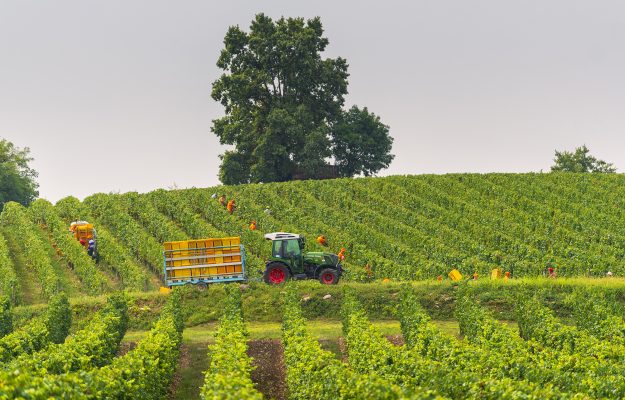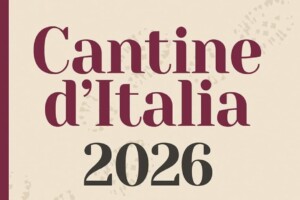If in some areas of Italy, starting with Franciacorta and Sicily, the harvest is already underway, any rains that may fall between now and mid-August could prove decisive in defining the 2022 vintage, after the suffering endured by grapes with the extreme dryness of the seasonal trend. Initial considerations gathered by Confagricoltura, meanwhile, agree on a generalized drop in quantity levels, estimated at -10%, more pronounced where there have been hailstorms, while on quality the careful agronomic management of the vineyard is confirmed as decisive.
Since 2003, the year that marked the climatic turnaround with obvious consequences on production, the entire sector has been investing so that the wine sector can face the effects of climate change without serious consequences. Of particular concern are plant diseases: in Piedmont, an increase in cases of Flavescenza Dorata is reported, while in the north of the region, an invasion of Popillia Japonica has defoliated large areas of vineyards. Meanwhile, the harvest has started early for sparkling wine bases in some areas of the Asti and Alessandria areas, for Moscato it will start around August 20, while on reds it is impossible to make reliable forecasts today, but there is optimism.
In Liguria, the lack of rainfall means that volumes are estimated to drop from 20%, with peaks of up to 40%, and high gradations. In Lombardy, production could drop by more than 20%, especially in some areas where it hailed. In one part of Oltrepò Pavese, there will be a drop of more than 60% in the harvest due to an extraordinary weather event. In the Veneto region, vineyards without irrigation are in a dramatic situation, compounded by the problem of Flavescenza Dorata in particular for whites: the production drop will be around 10%.
In Friuli Venezia Giulia, the grape harvest situation is divided according to soil type. In the more draining gravelly ones, irrigation stress is greater, because high evapotranspiration has limited the effectiveness of irrigation, and on early varieties the first heat-related ripening arrests are beginning to occur. With less water, not only quality but also yield will drop, and in vineyards on heavier soils, however, damage will be less. In Trentino, in the valley floor areas, stress situations are not evident, as the vineyards have sufficient water available. Pinot Grigio and Chardonnay vineyards grown in these areas should not have been affected by the climate, except marginally. The situation is different for vineyards in the foothills and hillsides: in vineyards that have been water-stressed, reduced berry development is noted, with a possible drop in production. Careful and judicious management of the winemaking stages, starting with pressing and selection of musts, will be essential to maintain high quality production.
Early harvest in Emilia-Romagna, where estimates show a drastic drop in the harvest in hilly areas, with a drop in production estimated in the range of 25-30%, because it is more difficult to irrigate. ; also suffering is the remaining viticulture in the plains, threatened by shortages of water resources for emergency irrigation and increasingly invasive plant diseases: here the drop is estimated at least 10%.
In Tuscany, the total absence of rainfall over almost the entire region for the past three months does not make it easy to identify the production trend for the 2022 harvest, even from a quality point of view. In addition to bunch weight loss, water stress is limiting veraison in many areas. Everything will depend on the rains, assuming they arrive in time.
In Umbria a 20% drop is estimated, but, as in other regions, for reds it is still early to make reliable forecasts. In the Marche region the situation is very varied: in some areas the vineyard is holding up quite well, in others there is a strong water stress already since the end of July, we expect a decrease of about 20% in volumes compared to the average. In areas of Abruzzo where irrigation has not been possible, there could be a 20% decrease in grape production volumes. Where, on the contrary, irrigation was possible, the prospects-both quantitative and qualitative-for the vintage are excellent, net, of course, of increased production costs.
At this stage, climatic uncertainty also dominates in Lazio, which can make the season evolve into extremely positive in quantity and quality, or very negative in both aspects: unfortunately, forecasts are leaning toward the second hypothesis. In Molise, the harvest trend is in the normal range: in terms of quantity, the farms that could resort to emergency irrigation are not in great distress, but the vineyards in dry conditions have some problems, particularly of vegetative blocks. Quality for early varieties will be good, for late varieties we need to wait how the situation will evolve, while from the phytosanitary point of view there are only a few episodes of powdery mildew on susceptible varieties.
Campania’s vineyard territory is also very varied in terms of climate. It is therefore difficult, as with other major regions, to make a single harvest forecast. To date, production values are estimated to be in line with the last five years, but if there is no rain in the coming weeks, losses of up to 10% could occur. In Calabria, the dry year looks good from a phytosanitary point of view. There are still more than 15 days until the first grapes are harvested, and almost 40 for the other later grapes. A few rains of the right intensity are expected to boost the clusters a bit in volume, but for those who have had the possibility of relief irrigation, the situation is optimal.
Upper Basilicata has almost no irrigation and accounts for 70% of the production potential: it will have drops of 25%, while the remaining part of the region is expected to have a 15% increase in production because it is irrigated. Here, too, the harvest will be early. Apulia is divided: the harvest of early grapes has started these days, but the bulk of the harvest is still a month away. Dryland production (especially Salento) estimates a 20% drop, while irrigated production is in the norm. In Sicily, harvesting has been taking place since the last days of July at sea level, with international varieties. The heavy autumn rains have filled the reservoirs, and those with irrigated vineyards have defended themselves well against the heat of the last 50 days, with good quality expected. In general, however, the decrease is in the order of 10%, and the harvest will continue until the end of October, so the heat and rains may still affect the current forecast.
Finally, in Sardinia, although the month of August will be decisive, a good year is expected in terms of quantity and quality. Good news also on the phytosanitary front, because the scarcity of rainfall did not favor the spread of vine diseases such as downy mildew and powdery mildew. The lack of water was partly compensated by moisture, so for both whites and red wines the forecast at the moment is rosy. From North to South, however, the increase in production costs will affect the market, and also stocks will affect the market.
“Looking forward, in light of the current economic situation, it is reasonable to imagine in the medium term a slowdown in the wine market with less trade in volume and lower value. Consumers could begin”, comments Federico Castellucci, president of Confagricoltura’s National Wine Federation, “to slow down the purchase of non-first necessity goods, such as wine, even in large-scale organized distribution”. The best reaction for the Italian wine sector - according to Confagricoltura - is to be even more focused on export markets, both European and in third countries, such as the U.S. and Canada, but also in Southeast Asia, where our country is very competitive because of its good quality/price ratio and extreme product variety, which has always been the strong point of our viticulture. “The consolidated image of Italian wine, supported by appropriate communication campaigns, should allow us”, Castellucci concludes, “to positively face this challenge at the international level”.
Copyright © 2000/2025
Contatti: info@winenews.it
Seguici anche su Twitter: @WineNewsIt
Seguici anche su Facebook: @winenewsit
Questo articolo è tratto dall'archivio di WineNews - Tutti i diritti riservati - Copyright © 2000/2025









































































































































































































